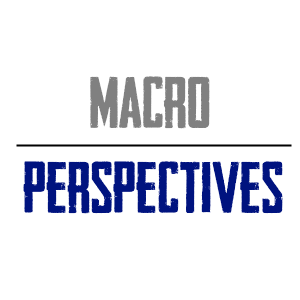The guys at Ritholtz Wealth knocked the ball out of the park with the Evidence Based Investing conference in Dana Point this year. Yesterday’s warm-up was Michael Mauboussin, followed by Rob Arnott who was followed by Jeff Gundlach. Inbetween all that amazingness was a set of incredible panels. I wish I could summarize it all. Hopefully Josh or Barry will do it at some point. I’ll do my part with a brief summary of some of what was said during my panel.
I was lucky to sit down with Mark Dow, Bill McBride, Tim Duy and Ben Carlson to discuss the right way to use  macroeconomics as an investing tool. Here are my key takeaways:
macroeconomics as an investing tool. Here are my key takeaways:
- Education, first and foremost. Macroeconomics is mostly an informational and educational tool for understanding how the big picture relates to your specific plan. Knowledge is the front line of the fight against uncertainty in the markets. The more we know the better we can process our plan and feel comfortable maintaining it over time. Having a sound macro framework is a useful tool for keeping your micro plan in a consistent macro perspective.
- Macro is a useful temporal tool. I always say that investing is all about mastering our asset-liability mismatch. We have short-term spending needs that we are trying to finance with income and asset growth. Most of our assets are long-term in nature because they are attached to long-term economic cycles. Having a sound macro understanding blends these views in a way that helps to keep this temporal puzzle in a more realistic perspective. It’s not about trying to predict every short-term move in the market as much as it’s about knowing not to get bucked off the bull by all the short-term noise.
- Myth Busting. I’ve found myth busting to be particularly useful in this regard. We are bombarded every day by scary news stories about government debt, rising rates, crashing stocks, etc. Having a sound macro perspective is grounding in that it helps you separate the the wheat and the chaff.
- Diagnostics vs Prediction. Mark Dow made a fantastic comment about using macro more for diagnostics than prediction. This is very much how I think of things. If we can boil macro down to certain operational realities then we find real truths about the monetary world. This improves our ability to diagnose what might happen. As Mark said, your doctor doesn’t predict exactly when you’ll have a heart attack. Instead, he/she diangoses the potential risk and puts probabilities on potential outcomes. We’re not trying to predict everything perfectly. Instead, we’re trying to build a model of the world so we can build reasonable probabilities of what might and might not happen. A sound macro understanding helps to put a lot of our extreme biases in check by bounding them with real verifiable operational realities which improve our ability to interpret the probabilities of certain outcomes.
Mr. Roche is the Founder and Chief Investment Officer of Discipline Funds.Discipline Funds is a low fee financial advisory firm with a focus on helping people be more disciplined with their finances.
He is also the author of Pragmatic Capitalism: What Every Investor Needs to Understand About Money and Finance, Understanding the Modern Monetary System and Understanding Modern Portfolio Construction.

